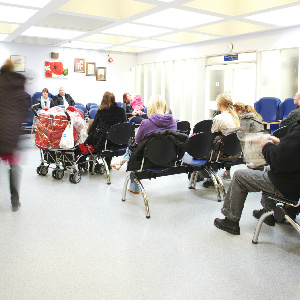GP practices face crackdown on walk-in centre attendances

GP practices with high numbers of registered patients who attend walk-in centres face tougher scrutiny of their opening hours, under proposals from Monitor.
The patient watchdog has recommended that managers should ‘identify and correct any access or other problems’ in GP practices that may be contributing to high attendance levels at walk-in centres.
Monitor also suggested – in the final version of its review of walk-in centre closures published today – that practices could be incentivised financially to ensure their registered population attends the practice over walk-in centres.
In a previous ‘interim’ report, Monitor concluded that GPs may be encouraged to ‘raise their game’ by increasing competition for funding between GPs and walk-in centres.
In the final report, Monitor said: ‘We recommend that commissioners work with any GP practices that have a high number of their patients using a walk-in centre to identify and correct any access or other problems.’
It added: ‘[L]ong-term solutions are needed to address the difficulties that some patients have in accessing primary care, and the difficulties some GP practices have in responding to increasing demand.’
Monitor also said there was ‘confusion’ over commissioning responsibility of walk-in centres, especially in those that were GP-led and also kept a registered list.
The report said: ‘Current payment mechanisms for GP practices and walk-in centres discourage commissioners from offering walk-in centres, even where these may represent a high quality, cost-effective model for delivering services.
‘In addition, the payment mechanisms do not strengthen incentives for GP practices to improve the quality and efficiency of their services so that their patients are more likely to choose the GP’s services rather than a walk-in centre.’
It comes as Monitor is already involved in a review of payment systems which it is jointly overseeing with NHS England. This is expected to suggest reform of hospital payments, after the bodies suggested that the current payment-by-results system ‘acts as a barrier to integrated care’.
However, in the report, Monitor also said the two bodies would develop a longterm, ‘coherent’ payment strategy for primary and secondary care, especially enabling ‘emerging’ models for integrated care across primary and secondary care.
It said: ‘Monitor and NHS England are working to improve payment mechanisms for urgent and emergency care services. This includes trying to better understand the costs of providing these services.
‘NHS England and Monitor have also pledged to work together to ensure there is a coherent payment system for both primary and secondary care, particularly for emerging new models of delivering integrated care across primary and secondary care settings.’
‘This is an issue that we will continue to consider with NHS England as we develop our long-term strategy for the payment system.’
Monitor’s executive director for co-operation and competition Catherine Davies said: ‘Our advice is designed to help commissioners make these services work better for patients, although ultimately what is best for patients will depend on local circumstances.’
BMA chair Dr Mark Porter, said: ‘The BMA has always said that the provision of walk-in centres should be based on patient need. Rather than the expense of setting up new centres, GP practices could have been offered extra investment to improve access and expand premises.’
Pulse July survey
Take our July 2025 survey to potentially win £1.000 worth of tokens












